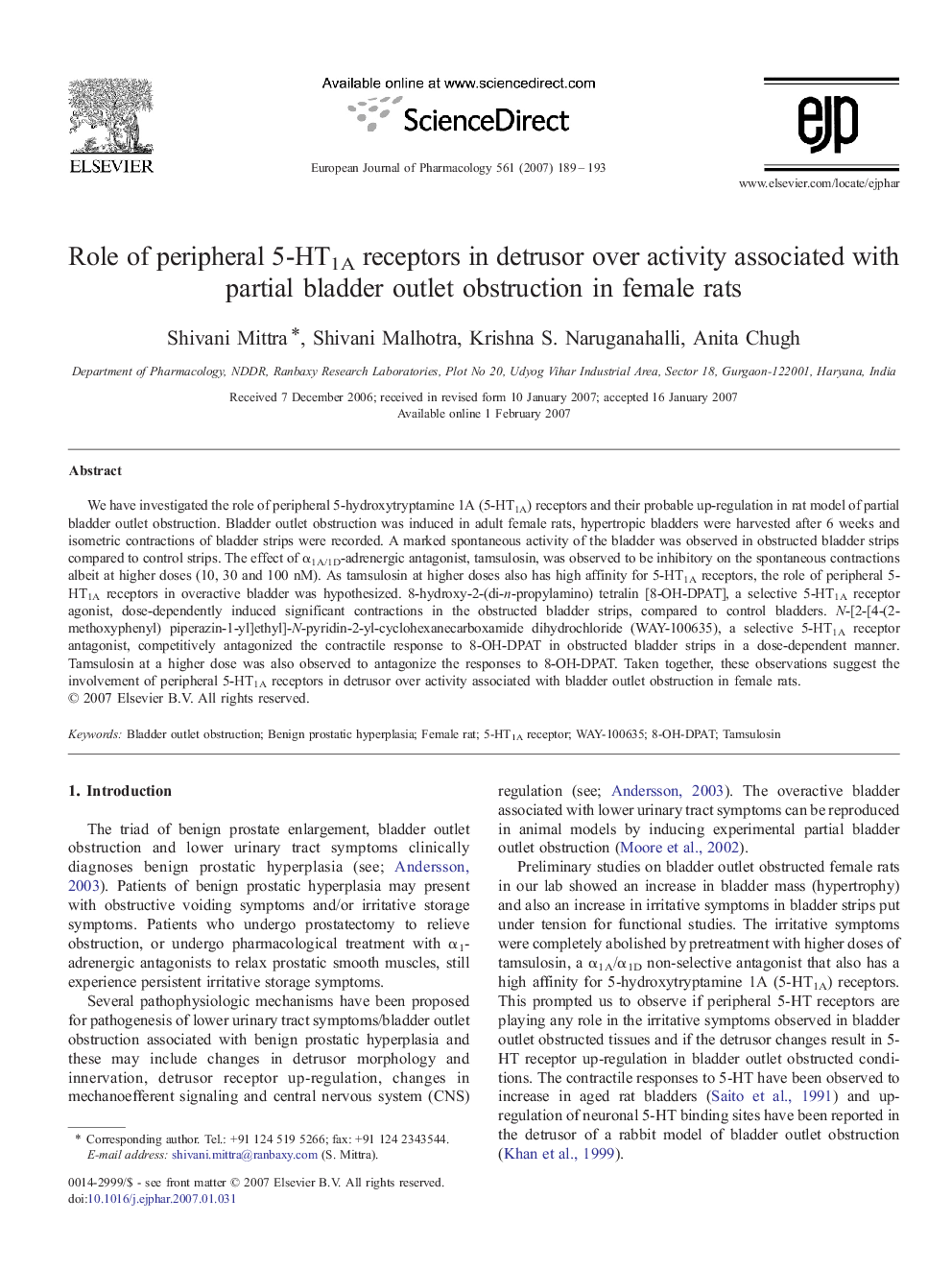| Article ID | Journal | Published Year | Pages | File Type |
|---|---|---|---|---|
| 2536288 | European Journal of Pharmacology | 2007 | 5 Pages |
Abstract
We have investigated the role of peripheral 5-hydroxytryptamine 1A (5-HT1A) receptors and their probable up-regulation in rat model of partial bladder outlet obstruction. Bladder outlet obstruction was induced in adult female rats, hypertropic bladders were harvested after 6 weeks and isometric contractions of bladder strips were recorded. A marked spontaneous activity of the bladder was observed in obstructed bladder strips compared to control strips. The effect of α1A/1D-adrenergic antagonist, tamsulosin, was observed to be inhibitory on the spontaneous contractions albeit at higher doses (10, 30 and 100 nM). As tamsulosin at higher doses also has high affinity for 5-HT1A receptors, the role of peripheral 5-HT1A receptors in overactive bladder was hypothesized. 8-hydroxy-2-(di-n-propylamino) tetralin [8-OH-DPAT], a selective 5-HT1A receptor agonist, dose-dependently induced significant contractions in the obstructed bladder strips, compared to control bladders. N-[2-[4-(2-methoxyphenyl) piperazin-1-yl]ethyl]-N-pyridin-2-yl-cyclohexanecarboxamide dihydrochloride (WAY-100635), a selective 5-HT1A receptor antagonist, competitively antagonized the contractile response to 8-OH-DPAT in obstructed bladder strips in a dose-dependent manner. Tamsulosin at a higher dose was also observed to antagonize the responses to 8-OH-DPAT. Taken together, these observations suggest the involvement of peripheral 5-HT1A receptors in detrusor over activity associated with bladder outlet obstruction in female rats.
Keywords
Related Topics
Life Sciences
Neuroscience
Cellular and Molecular Neuroscience
Authors
Shivani Mittra, Shivani Malhotra, Krishna S. Naruganahalli, Anita Chugh,
